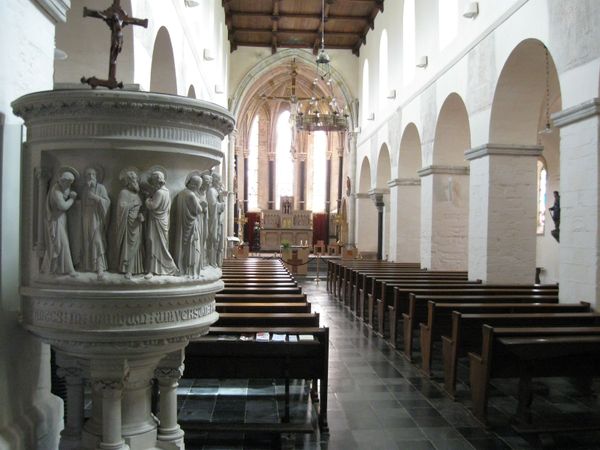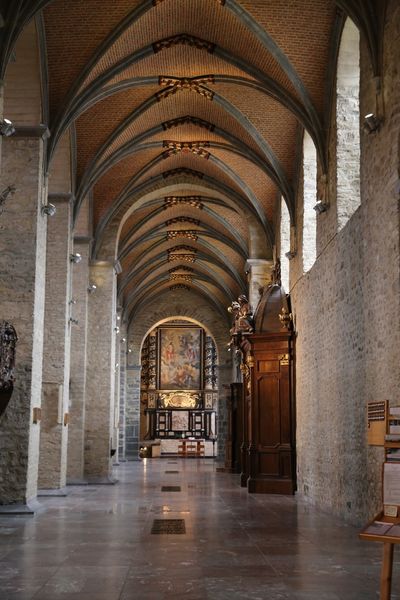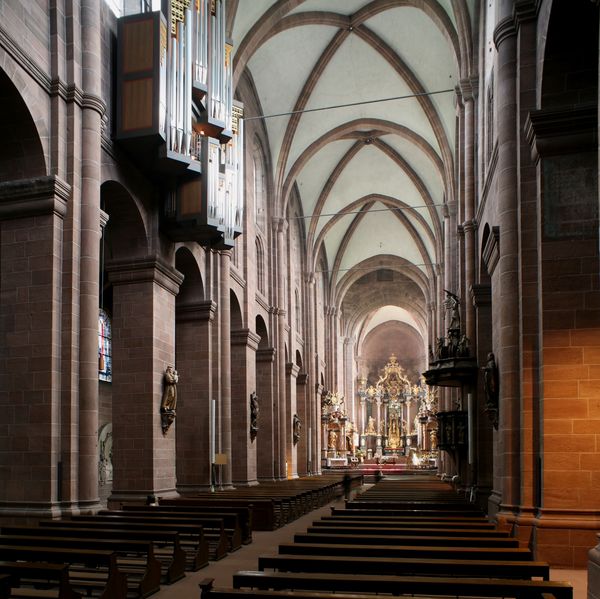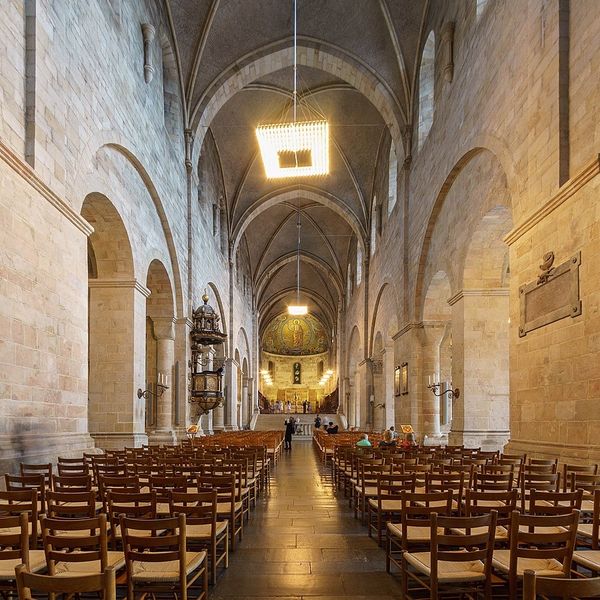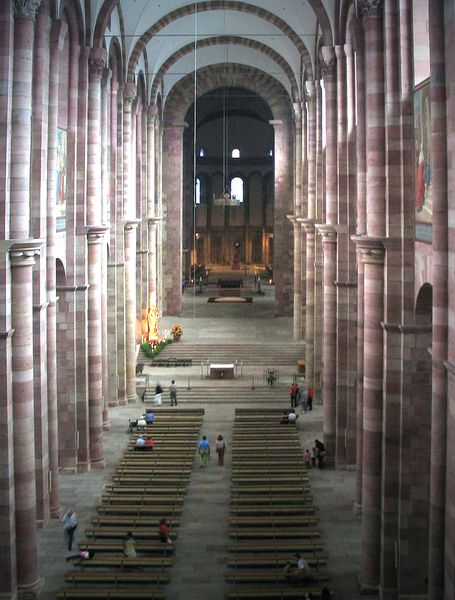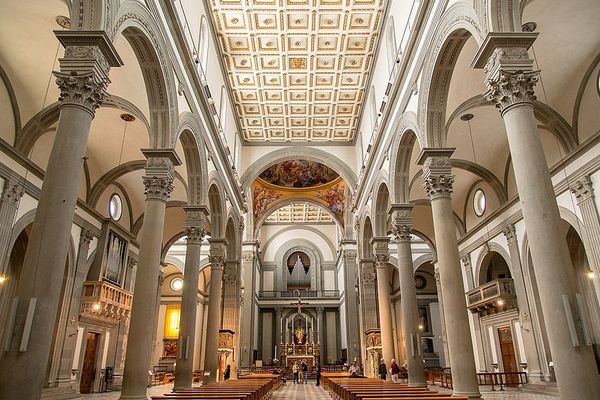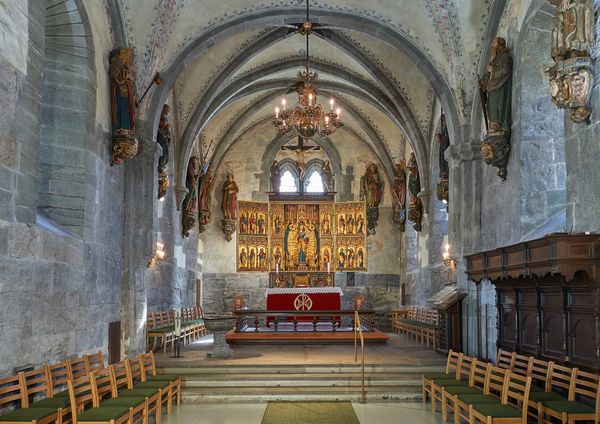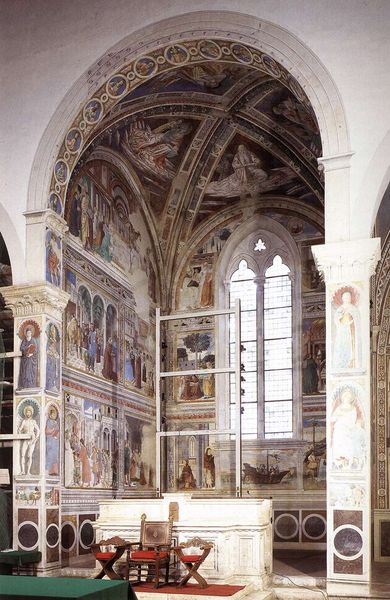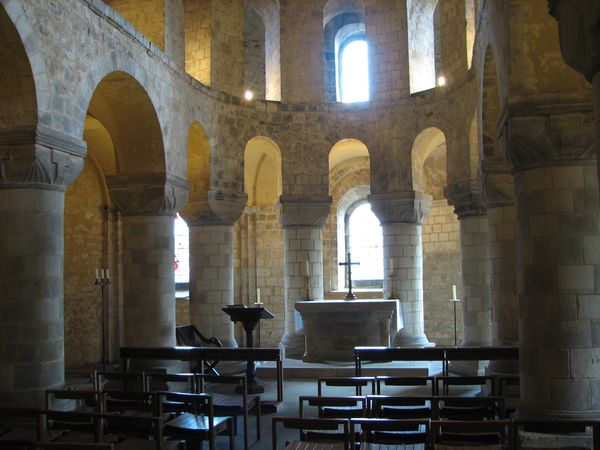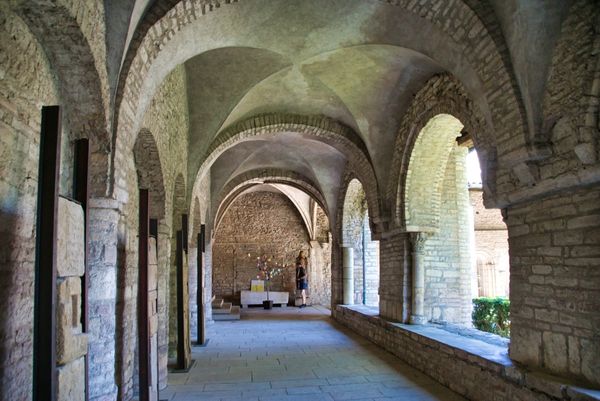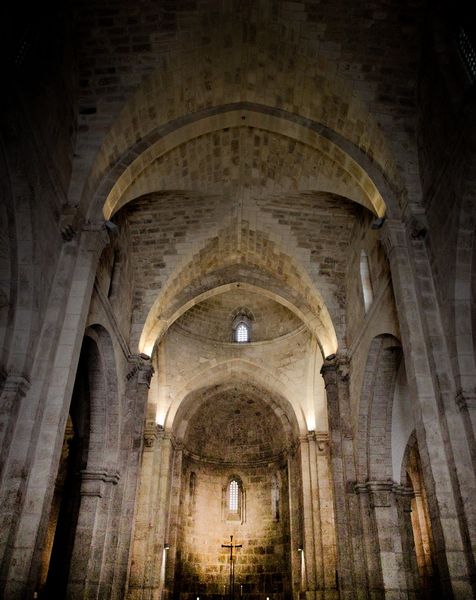
architecture
#
medieval
#
holy-places
#
romanesque
#
architecture
Copyright: Public domain
The interior of Tum Collegiate Church in Poland, built by Romanesque architects between about 1000 and 1250, showcases the period's architectural principles through its extensive use of rounded arches and massive structures. The repetitive archways create a visual rhythm that pulls the eye upward and suggests a sense of infinite space, reflecting a hierarchical relationship between the earthly and the divine. The builders used local materials, giving the interior a rugged, earthy texture, contrasted by the smooth, rounded forms of the arches. The architecture's manipulation of space and light serves to create a powerful emotional and spiritual experience. The overall structure is a testament to the Romanesque period's engagement with form as a means to convey religious meaning.
Comments
No comments
Be the first to comment and join the conversation on the ultimate creative platform.
